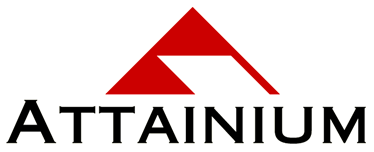Attainium’s disaster training provides some new perspectives on disaster response for a “Top 100” training company
AlliedBarton Security Services has been providing security officer services to clients in a number of industry sectors since 1957. It currently has more than 47,000 employees in 100 offices nationwide and serves close to 4,000 customers. The company’s award-winning training programs, on-the-job, and Web-based training are designed to prepare employees to meet challenges in a variety of security-related areas. In 2006, AlliedBarton was chosen as one of Training magazine’s “Top 100” training companies.
The Atlanta office of AlliedBarton recently brought in Gainesville, VA-based Attainium Corp. to conduct its interactive shelter-in-place Disaster Experience for AlliedBarton’s local Atlanta employees and customers. “The program was recommended by my boss,” said Keith Kepler, AlliedBarton VP, “who attended a similar program Attainium conducted for BOMA (Building Owners and Managers Association) and IFMA (International Facility Managers Association). People I spoke to afterward thought the session was innovative and practical,” he said.
According to Bob Mellinger, Attainium president and CEO, “In any emergency, the more people who can take care of themselves, the better off everyone is. If people understand the jobs of first responders and each other, they’re more likely to understand what’s happening and to be cooperative.”
“This was very different from other training sessions I’ve been to,” said Mark Dukes, VP for Asset Management and Customer Service at Duke Realty Corporation in Atlanta, who has plenty of real-life experience with disasters after 15 years in the business continuity field. “The Disaster Experience was more comprehensive and more polished than the others. The sound cues, deadlines, new dynamics and changes in direction were well planned and well communicated… it felt like it would be if we actually were in the situation.
“The session’s focus on the ability to communicate and the delivery of communications added pressure to be all over the communication and notification issue,” Dukes said. “You can’t just focus on your building… if things happen within three or four blocks, you have to let people know about these things.”
“The training made you think about how you’d do everything,” said Marilyn Walton, a property manager for Heritage Property Management in Atlanta. You can’t bring in someone at the last minute to handle a situation; you can’t just say ‘be prepared.’ You actually have to be prepared for almost everything, and you must get control of the situation right away. In addition to a war room, you have to have feet on the street… people in key places… so you’ll know as much as possible about what’s going on.”
“One of the goals of the Disaster Experience,” Mellinger said, “is to help participants realize the need to focus on the little things as much as on the big things. For example, if you don’t have sufficient supplies on hand to make people comfortable in a shelter-in-place scenario – food, water, diversions, etc. -- it may exacerbate the situation.”
“The flow of the scenario was good,” Dukes said. “You were able to feel good about decisions you made but you never really relaxed. It reinforced the need to be prepared in the midst of things as well as before things happen.”
“A viable, current business continuity plan has never been more important than it is today,” said Mellinger. “Even more important is the need to test that plan to make sure it works as expected and to correct anything that doesn’t. Billions of dollars in productivity, revenue, and goodwill are lost every year as a result of disasters and companies' inability to respond to them appropriately. The Disaster Experience has been designed to put participants through their paces in the throes of a real-life disaster situation, as it unfolds. AlliedBarton’s decision to offer the program to their employees and customers is evidence of their commitment to preparedness, security and safety.”
# # #

